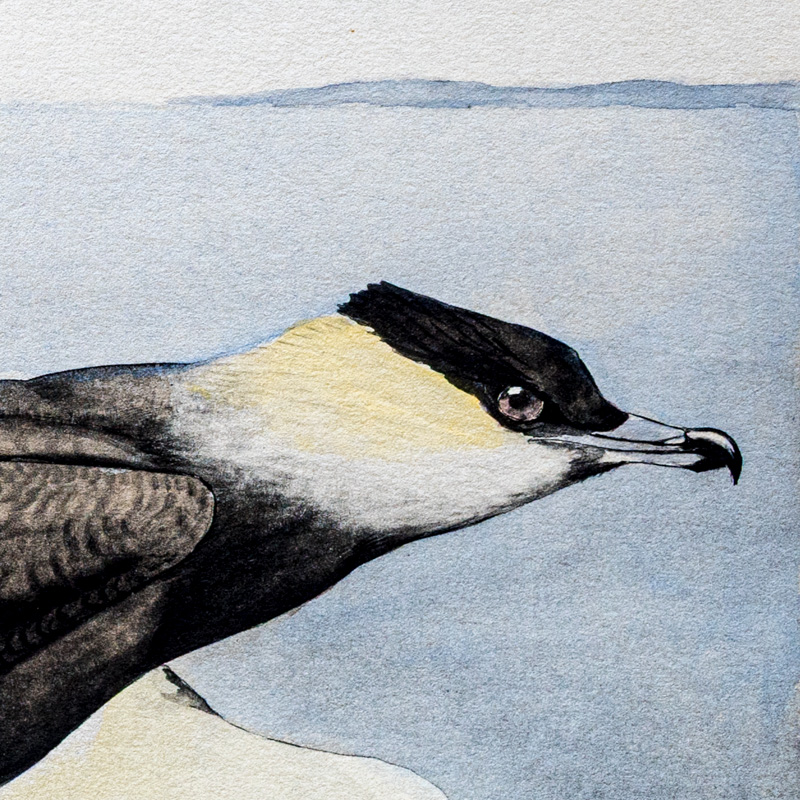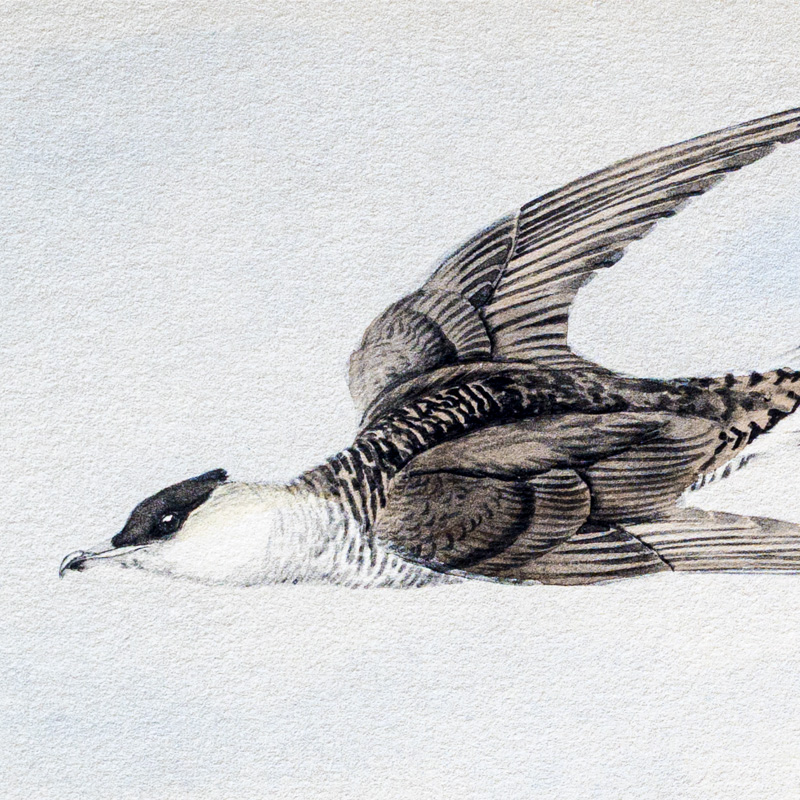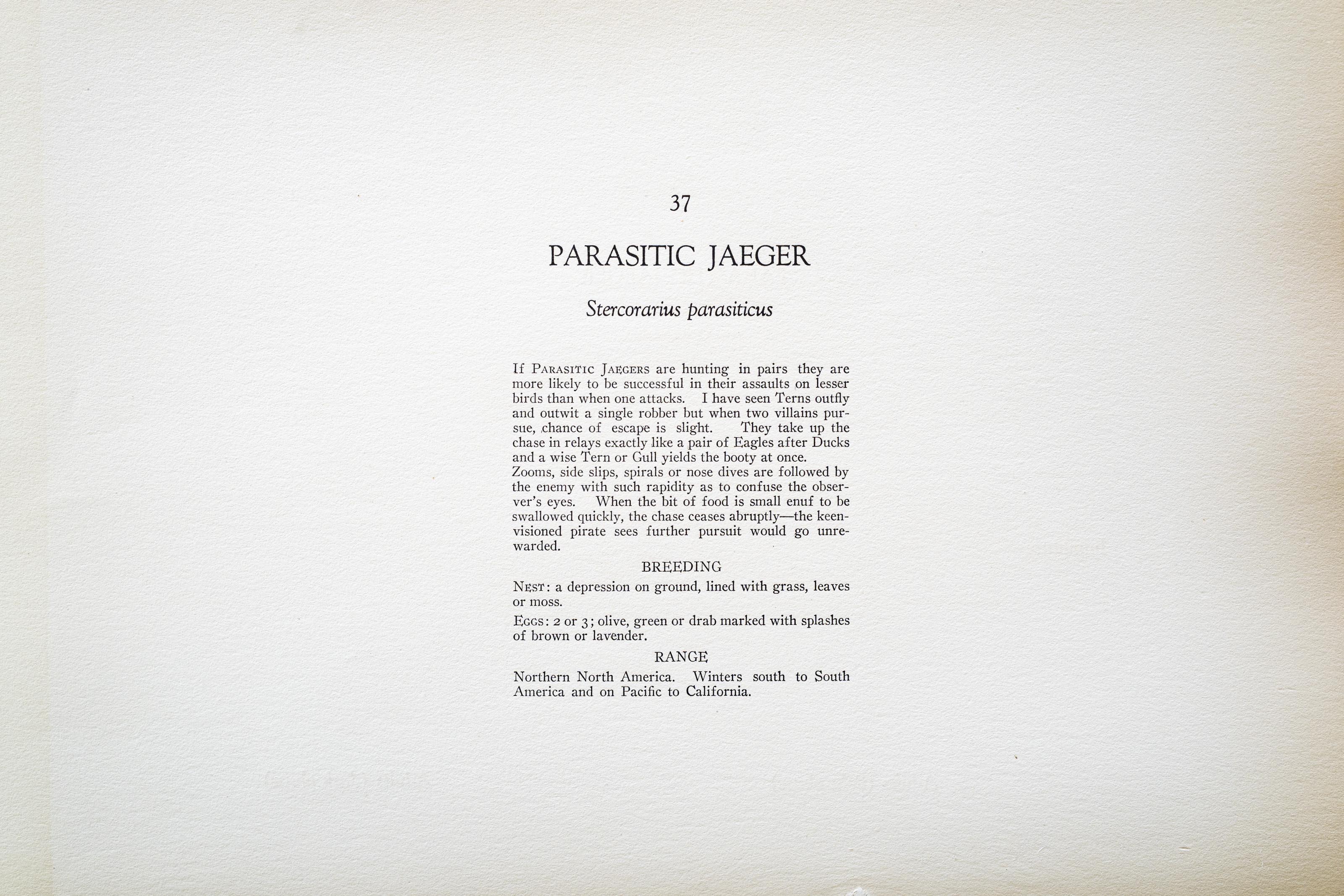






Unknown
1932
1
37
A team of dedicated board members, volunteers, and student interns has published every page in Volume 9. This volume includes 360 images of paintings and lyrical descriptions of birds, now available online for everyone to enjoy anywhere in the world. This is a monumental task. Each volume requires approximately 400 hours to photograph, edit, transcribe, catalog, and publish online. We need your support to complete this work.
If you're tech-savvy, have a good eye, are meticulous with details, and love structured data, please consider volunteering by emailing us at hello@rexbrasher.org.
We encourage all bird lovers and supporters to consider a monetary donation to support our mission to make Rex's work available for everyone. You can provide a one-time or recurring donation online.
If PARASITIC JAEGERS are hunting in pairs they are more likely to be successful in their assaults on lesser birds than when one attacks. I have seen Terns outfly and outwit a single robber but when two villains pursue, chance of escape is slight. They take up the chase in relays exactly like a pair of Eagles after Ducks and a wise Tern or Gull yields the booty at once.
Zooms, side slips, spirals or nose dives are followed by the enemy with such rapidity as to confuse the observer's eyes. When the bit of food is small enuf to be swallowed quickly, the chase ceases abruptly — the keen-visioned pirate sees further pursuit would go unrewarded.
NEST: a depression on ground, lined with grass, leaves or moss.
EGGS: 2 or 3; olive, green or drab marked with splashes of brown or lavender.
Northern North America. Winters south to South America and on Pacific to California.